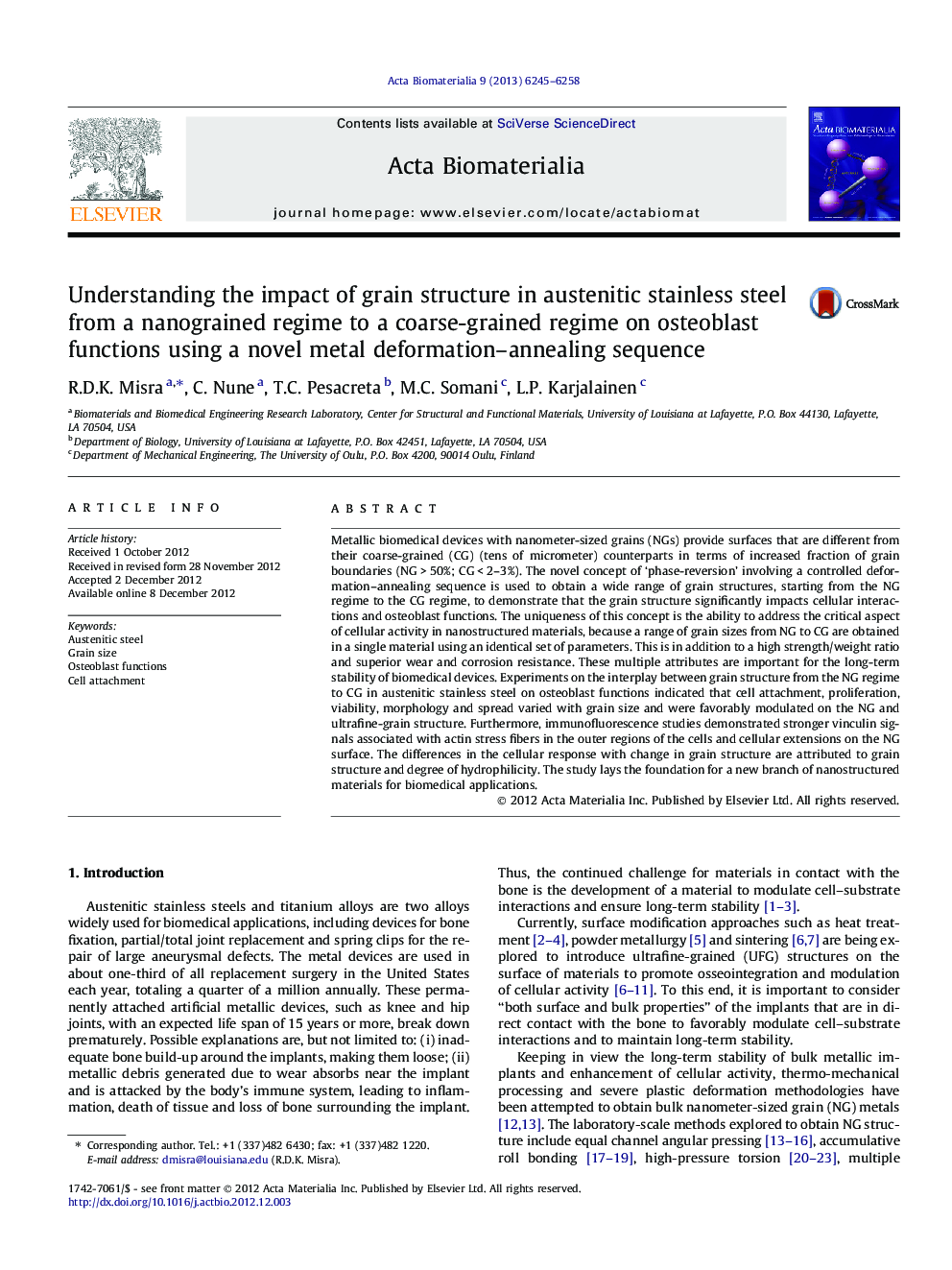| Article ID | Journal | Published Year | Pages | File Type |
|---|---|---|---|---|
| 10159881 | Acta Biomaterialia | 2013 | 14 Pages |
Abstract
Metallic biomedical devices with nanometer-sized grains (NGs) provide surfaces that are different from their coarse-grained (CG) (tens of micrometer) counterparts in terms of increased fraction of grain boundaries (NGÂ >Â 50%; CGÂ <Â 2-3%). The novel concept of 'phase-reversion' involving a controlled deformation-annealing sequence is used to obtain a wide range of grain structures, starting from the NG regime to the CG regime, to demonstrate that the grain structure significantly impacts cellular interactions and osteoblast functions. The uniqueness of this concept is the ability to address the critical aspect of cellular activity in nanostructured materials, because a range of grain sizes from NG to CG are obtained in a single material using an identical set of parameters. This is in addition to a high strength/weight ratio and superior wear and corrosion resistance. These multiple attributes are important for the long-term stability of biomedical devices. Experiments on the interplay between grain structure from the NG regime to CG in austenitic stainless steel on osteoblast functions indicated that cell attachment, proliferation, viability, morphology and spread varied with grain size and were favorably modulated on the NG and ultrafine-grain structure. Furthermore, immunofluorescence studies demonstrated stronger vinculin signals associated with actin stress fibers in the outer regions of the cells and cellular extensions on the NG surface. The differences in the cellular response with change in grain structure are attributed to grain structure and degree of hydrophilicity. The study lays the foundation for a new branch of nanostructured materials for biomedical applications.
Related Topics
Physical Sciences and Engineering
Chemical Engineering
Bioengineering
Authors
R.D.K. Misra, C. Nune, T.C. Pesacreta, M.C. Somani, L.P. Karjalainen,
